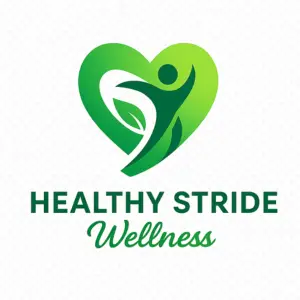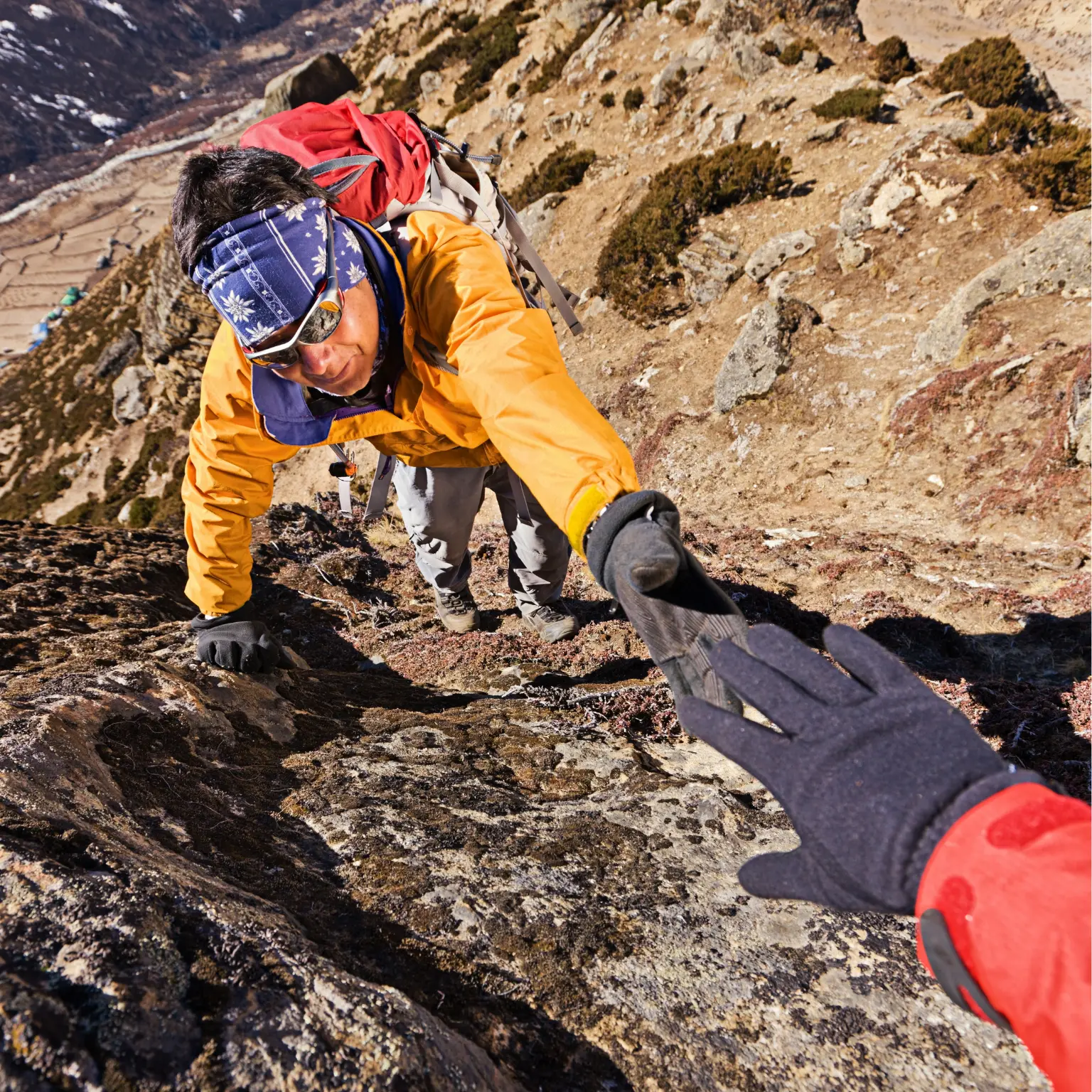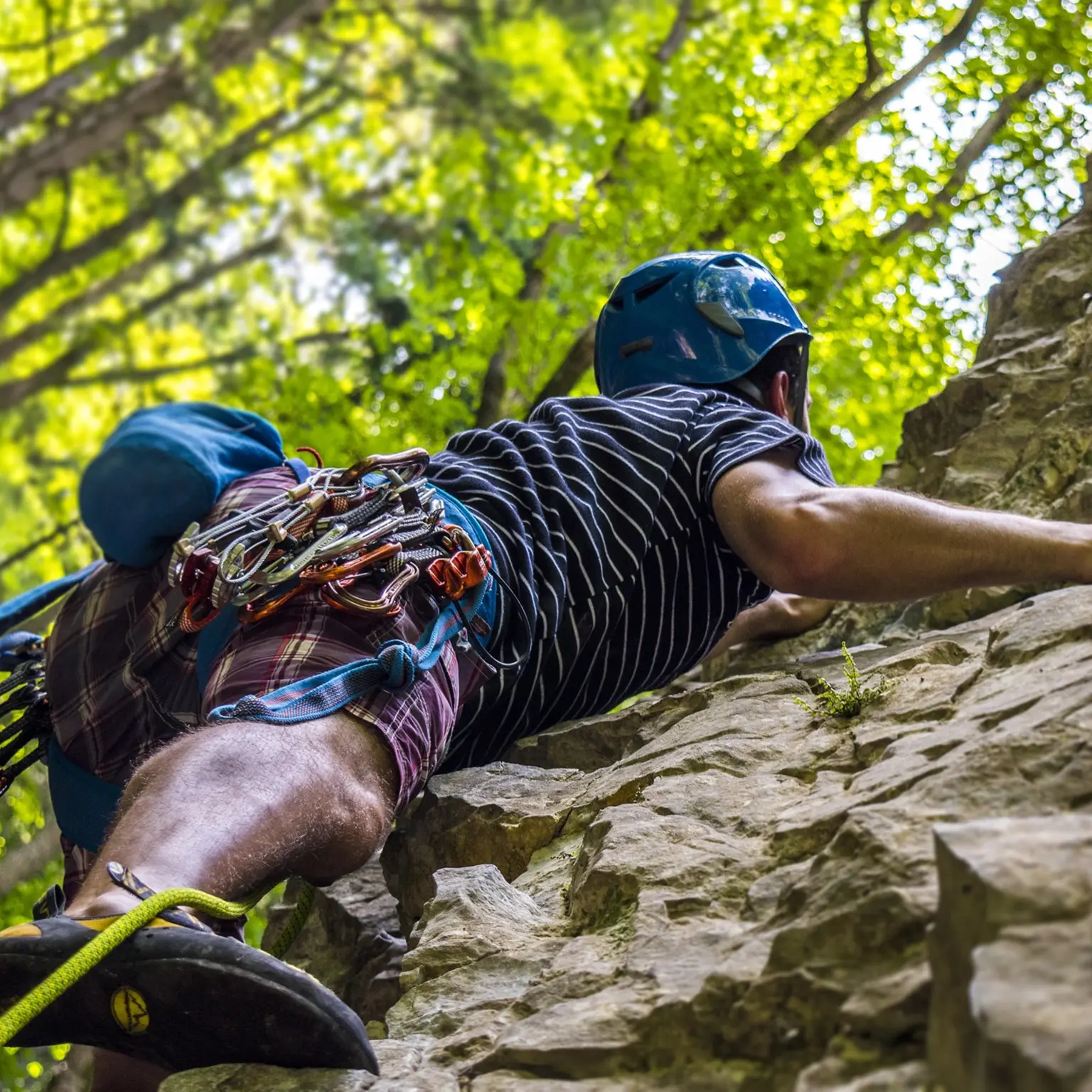The Essential Guide to Warming Up and Cooling Down: Protect Your Body & Maximize Results

Picture this: You’re eager to start your workout, whether it’s a run through the park, a strength training session at the gym, or a yoga flow at home. You lace up your sneakers, grab your water bottle, and jump right into your routine. But as you push through those first few minutes, you feel a twinge in your hamstring or a tightness in your shoulder. Ouch!
Sound familiar? Healthy Stride Wellness recognizes that many people underestimate the importance of warming up and cooling down, viewing them as optional extras rather than essential components of a safe and effective exercise routine. However, neglecting these phases can lead to injuries, suboptimal performance, and delayed recovery.
In this comprehensive guide, we at Healthy Stride Wellness will delve into the science behind why warm-ups and cool-downs are so crucial for your body. We’ll provide step-by-step routines that you can tailor to your specific activities, ensuring you’re protecting your body and getting the most out of your workouts. By the end, you’ll understand why a proper warm-up and cool-down are non-negotiable for anyone who wants to achieve their fitness goals while staying injury-free.
Let’s start by understanding why a proper warm-up is your first step towards a successful workout.
Table of Contents
Key Takeaways
- Warm-Up Power: Warming up isn’t just about breaking a sweat. It’s about priming your body for peak performance and minimizing injury risk. Increased blood flow, improved flexibility, enhanced performance, and injury prevention are just a few of the key benefits you’ll gain from a proper warm-up routine.
- Cool-Down for Recovery: Cooling down is equally important, but often overlooked. This gradual transition back to a resting state allows your heart rate to normalize, flushes out lactic acid, and enhances flexibility. Neglecting cool-down can lead to muscle soreness, stiffness, and even potential injuries.
- Tailor Your Routine: Different activities demand different warm-up and cool-down strategies. Whether you’re into running, strength training, cycling, swimming, or yoga, there are specific routines that can maximize the benefits of your chosen activity. Healthy Stride Wellness can guide you in creating a personalized plan that aligns with your fitness goals.
Why Warm Up? Understanding the Science: Preparing Your Body for Action
Warming up before you exercise might seem like an unnecessary extra step, especially when you’re eager to dive into your workout. However, Healthy Stride Wellness emphasizes that warming up isn’t just about raising your body temperature; it’s about preparing your body for the demands of physical activity and priming it for optimal performance.
Increased Blood Flow
When you start to move your body during a warm-up, your heart rate gradually increases. This increase in heart rate leads to increased blood flow to your muscles. The enhanced blood flow delivers oxygen and nutrients to your muscles, preparing them for the work they’re about to do. This is like revving a car engine before hitting the gas pedal.
Improved Flexibility
Warming up gradually increases your body temperature, which helps loosen your muscles and joints. This increased flexibility allows for a greater range of motion, making it easier to perform exercises correctly and reducing the risk of injury. Think of it as gently stretching out a rubber band before pulling it taut.
Enhanced Performance
A warm-up not only prepares your muscles and joints but also primes your nervous system. This leads to improved coordination, faster reaction times, and better overall performance during your workout. It’s like sending a signal to your brain and body that it’s time to get moving and perform at your best.
Injury Prevention
Perhaps the most crucial benefit of warming up is injury prevention. Cold muscles are more prone to strains, tears, and other injuries. A proper warm-up gradually increases muscle elasticity and prepares them for the stress of exercise, reducing the risk of injury significantly. Think of it as a safety net protecting your body from potential damage.
Research Backs It Up: A meta-analysis published in the Journal of Strength and Conditioning Research found that warm-ups can significantly reduce the risk of sports-related injuries. Another study in the British Journal of Sports Medicine showed that warm-ups can improve muscle power and performance.
Don’t underestimate the power of a good warm-up. It’s a small investment of time that can pay off in big ways, protecting your body, enhancing your performance, and setting you up for a successful and enjoyable workout.
The Ideal Warm-Up Routine: Step-by-Step Guide
Now that you understand the science behind warming up, let’s get practical. Healthy Stride Wellness recommends a structured approach to your warm-up, ensuring you adequately prepare your body for the specific demands of your chosen activity.
Step-by-Step Guide
- General Warm-Up (5-10 minutes): This phase is designed to gradually increase your heart rate, blood flow, and body temperature. It typically involves light cardiovascular exercise and dynamic stretches.
- Light Cardio: Start with 5 minutes of light cardio to get your blood pumping. This could include:
- Jogging in place: A simple yet effective way to warm up your legs and get your heart rate elevated.
- Jumping jacks: A full-body movement that engages multiple muscle groups.
- High knees or butt kicks: Dynamic movements that warm up your lower body and core.
- Arm circles and swings: Loosen shoulders and upper body.
- Dynamic Stretches: Follow up with 5 minutes of dynamic stretches that involve continuous movement. This could include:
- Arm circles: Forward and backward arm circles to warm your shoulders.
- Leg swings: Forward, backward, and side-to-side leg swings to loosen up your hips and legs.
- Torso twists Gentle twists to mobilize your spine and core.
- Walking lunges: A dynamic stretch that engages your legs and core.
- Light Cardio: Start with 5 minutes of light cardio to get your blood pumping. This could include:
- Sport-Specific Warm-Up (5-10 minutes): This phase focuses on preparing your body for the specific movements and demands of your chosen activity.
- Running: Include high knees, butt kicks, and leg swings to warm up the muscles used for running.
- Strength Training: Perform light sets of the exercises you plan to do with lighter weights or resistance bands.
- Cycling: Start with a few minutes of easy pedaling to warm up your legs and get your heart rate going.
- Swimming: Begin with a few laps of easy freestyle or breaststroke to loosen your muscles and joints.
- Yoga: Perform gentle sun salutations or other flowing movements to prepare your body for yoga poses.
- Tips for Customization
- Adjust Intensity and Duration: The intensity and duration of your warm-up should be based on your fitness level and the type of activity you’re doing. If you’re a beginner or doing a low-intensity workout, a shorter warm-up may be sufficient. However, if you’re an experienced athlete or doing a high-intensity workout, you’ll need a longer and more thorough warm-up.
- Listen to Your Body: Pay attention to how your body feels during the warm-up. If you experience any pain or discomfort, stop and modify the exercise or stretch. Don’t push yourself too hard during the warm-up phase.
By following this step-by-step guide and customizing it to your needs, you can ensure that your body is fully prepared for the challenges of your workout. Remember, a proper warm-up is an investment in your safety and performance.
Why Cool Down? The Importance of Recovery
Just as a warm-up prepares your body for exercise, a cool-down helps it transition back to a resting state. Healthy Stride Wellness emphasizes that neglecting the cool-down is a missed opportunity for recovery and can leave you feeling sore, stiff, and more prone to injury.
Recovering Your Body After Exercise
- Gradual Heart Rate Reduction: During exercise, your heart rate increases to meet the demands of physical activity. Cooling down allows your heart rate to gradually return to normal, preventing dizziness or lightheadedness that can occur with sudden stops. It’s like gradually slowing down a car instead of slamming on the brakes.
- Lactic Acid Removal: Lactic acid is a byproduct of intense exercise that can build up in your muscles, causing soreness and fatigue. Cooling down helps flush out lactic acid through continued movement, promoting faster recovery and reducing muscle soreness.
- Flexibility and Recovery: Gentle stretching during your cool-down helps improve flexibility and reduce muscle stiffness. This can enhance your range of motion and make it easier to move freely after your workout.
- Injury Prevention: A proper cool-down helps prevent injuries by gradually reducing muscle tension and promoting blood flow. This can reduce the risk of muscle cramps, spasms, and other post-workout aches and pains.
The Science of Cool-Down: A study published in the Journal of Strength and Conditioning Research found that a proper cool-down can significantly reduce muscle soreness and improve recovery after exercise. Another study in the International Journal of Sports Medicine found that a cool-down can enhance flexibility and range of motion.
Cooling down is not just about feeling good right now; it’s an investment in your long-term health and fitness. By prioritizing recovery, you’re ensuring that your body is ready to tackle your next workout and reducing your risk of injury.
The Ideal Cool-Down Routine: Step-by-Step Guide
Ready to cool down after your intense workout? Healthy Stride Wellness has you covered. Just like warming up, cooling is a crucial part of any exercise routine. It helps your body recover, reduces muscle soreness, and prevents injuries. Let’s break down the ideal cool-down routine into a few simple steps:
Step-by-Step Guide
- Gradual Decrease in Intensity (5 minutes): The first step is to gradually reduce the intensity of your workout. This allows your heart rate to slowly return to normal and prevents dizziness or lightheadedness.
- If you were running: Slow down to a jog, then a walk.
- If you were lifting weights: Decrease the weight or resistance and perform a few more repetitions with lighter weights.
- If you were playing a sport: Engage in light cardio, such as jogging or walking around the field or court.
- Static Stretching (5-10 minutes): Once you’ve gradually lowered your heart rate, it’s time for static stretching. These stretches involve holding a position for some time, typically 15-30 seconds. Focus on the major muscle groups you used during your workout.
- Hamstring stretch: Sit on the ground with one leg extended and the other bent. Reach your toes on the extended leg.
- Quadriceps stretch: Stand on one leg and grab your other foot behind you, bringing your heel towards your buttock.
- Calf stretch: Stand facing a wall and lean forward, keeping your back leg straight and your heel on the ground.
- Chest stretch: Clasp your hands behind your back and lift your arms gently.
- Shoulder stretch: Reach one arm across your body and hold it with your other arm.
- Tips for Customization
- Focus on tight or sore areas: If you feel tightness or soreness in specific areas, spend more time stretching those muscles.
- Don’t bounce: Static stretches should be held gently and steadily, without bouncing.
- Breathe deeply: Focus on deep breathing to relax your muscles and improve the effectiveness of stretches.
- Consult a professional: If you have any injuries or concerns, consult with a physical therapist or qualified fitness professional for guidance on appropriate stretches.
Remember, cooling down is not just an afterthought; it’s an integral part of a safe and effective exercise routine. By taking the time to properly cool down, you’re allowing your body to recover, reducing your risk of injury, and setting yourself up for success in your next workout.
Warm-Up and Cool-Down Routines for Different Activities
Healthy Stride Wellness understands each activity has its demands. That’s why we’ve compiled specific warm-up and cool-down routines tailored to popular exercises. These routines are designed to prepare your body for the specific movements and stresses involved in each activity while promoting optimal recovery and injury prevention.
Tailored to Your Workout
Running
- Warm-up
- 5 minutes of light jogging followed by 5 minutes of dynamic stretches like leg swings, arm circles, and torso twists.
- Focus on warming up the muscles used for running, like your calves, hamstrings, quads, and hip flexors.
- Cool-down:
- 5 minutes of slow jogging followed by 5-10 minutes of static stretches like hamstring stretches, quad stretches, and calf stretches.
- Hold each stretch for 15-30 seconds, focusing on deep breathing and relaxation.
Strength Training
- Warm-up:
- 5 minutes of light cardio, like jumping jacks or jumping rope.
- Perform 1-2 light sets of the exercises you plan to do with lighter weights or resistance bands.
- Cool-down:
- 5 minutes of light cardio.
- 5-10 minutes of static stretches, focusing on the major muscle groups you worked on during your strength training session.
Cycling
- Warm-up:
- 5-10 minutes of easy pedaling.
- Include dynamic stretches like leg swings, torso twists, and arm circles.
- Cool-down:
- 5 minutes of easy pedaling.
- 5-10 minutes of static stretches, focusing on your hamstrings, quads, calves, and lower back.
Swimming
- Warm-up:
- 5-10 minutes of easy swimming, like freestyle or breaststroke.
- Include dynamic stretches like arm circles, shoulder shrugs, and leg swings.
- Cool-down:
- 5 minutes of easy swimming.
- 5-10 minutes of static stretches for your shoulders, chest, back, and legs.
Yoga
- Warm-up:
- 5-10 minutes of gentle flowing movements, such as Cat-Cow Pose, Child’s Pose, and Downward-Facing Dog.
- Focus on deep breathing and mindful movement.
- Cool-down:
- 5-10 minutes of restorative yoga poses, such as Legs-up-the-Wall Pose or Reclining Butterfly Pose.
- Allow your body to relax and your heart rate to return to normal.
Remember, these are just general guidelines. You can adapt and personalize these routines to your specific needs and preferences. The key is to listen to your body and prioritize safety and comfort.
By incorporating these tailored warm-up and cool-down routines into your workouts, you’ll be optimizing your performance, reducing your risk of injury, and promoting faster recovery. Healthy Stride Wellness believes that this holistic approach to exercise will set you up for long-term success in your fitness journey.
Common Mistakes to Avoid
Even with the best intentions, it’s easy to make mistakes when warming up and cooling down. Healthy Stride Wellness wants to help you avoid these common pitfalls that can hinder your progress and increase your risk of injury.
- Skipping Warm-Up or Cool-Down Altogether: This is the most common mistake people make. It’s easy to feel rushed or impatient, but skipping these essential phases can be detrimental to your body. Think of them as bookends to your workout – they set the stage for success and ensure a smooth transition back to a resting state.
- Static Stretching Before Warming Up: While static stretching (holding a pose for an extended period) is an important part of the cool-down, it should never be done before warming up. Cold muscles are not as pliable, and static stretching can increase the risk of injury. Instead, opt for dynamic stretches that involve movement, such as arm circles, leg swings, and torso twists, to prepare your muscles for activity.
- Pushing Too Hard During Warm-Up: The purpose of a warm-up is to gradually prepare your body, not exhaust it. Keep the intensity low to moderate and focus on controlled movements. If you’re feeling breathless or overly fatigued during your warm-up, you’re likely pushing too hard.
- Neglecting Hydration: Dehydration can impair your performance and increase your risk of injury. Be sure to drink water before, during, and after your workout, especially if you’re exercising in cold weather.
- Not Listening to Your Body: Pay attention to how your body feels during both the warm-up and cool-down. If you experience pain, discomfort, or unusual fatigue, stop and rest. Don’t try to push through pain, as this could exacerbate an injury.
- Ignoring Proper Form: Whether you’re doing dynamic stretches during the warm-up or static stretches during the cool-down, proper form is crucial. Incorrect form can put unnecessary stress on your joints and muscles, increasing your risk of injury. If you’re unsure about the proper form, consult a qualified fitness professional for guidance.
By avoiding these common mistakes, you can ensure that your warm-up and cool-down routines are safe and effective, and contribute to your overall fitness goals.
Conclusion: Warm Up, Cool Down, and Thrive
Incorporating a proper warm-up and cool-down into your exercise routine isn’t just a recommendation; it’s a non-negotiable for anyone serious about their fitness journey, as championed by Healthy Stride Wellness. By prioritizing these essential phases, you’re not only protecting your body from injury but also optimizing your performance and accelerating your recovery.
Remember, your body is your most valuable asset. Treat it with care and respect by warming up before you push it to its limits and cooling down to help it recover. The benefits are undeniable:
- Reduced Risk of Injury: Warm-ups prepare your muscles and joints for activity, while cool-downs help prevent post-workout soreness and stiffness.
- Enhanced Performance: A well-prepared body performs better, allowing you to push your limits and achieve your fitness goals.
- Faster Recovery: Cooling down helps flush out lactic acid and reduce muscle soreness, allowing you to bounce back quicker and train more consistently.
- Improved Flexibility and Range of Motion: Stretching during warm-up and cool-down enhances flexibility, making movement easier and more enjoyable.
So, the next time you lace up your shoes, hit the gym, or roll out your yoga mat, remember that the extra few minutes you invest in warming up and cooling down are well worth it. Your body will thank you for it!
Healthy Stride Wellness is committed to your health and fitness journey. We encourage you to prioritize these essential aspects of your workout routine, so you can experience the joy of movement without the setbacks of injury or discomfort.
Explore our website for further guidance on warm-up and cool-down exercises tailored to your specific activities, and a wealth of resources on nutrition, injury prevention, and overall wellness.
FAQs
How long should my warm-up and cool-down last?
A general guideline is 5-10 minutes for each phase, but the duration can vary depending on the intensity and type of exercise. For higher-intensity workouts, a longer warm-up and cool-down might be beneficial.
What are some common warm-up mistakes to avoid?
Avoid static stretching before warming up, as this can strain cold muscles. Don’t push yourself too hard during the warm-up, and remember to hydrate.
What are the best cool-down exercises for muscle recovery?
Light cardio, like slow jogging or walking, followed by static stretches targeting the major muscle groups used during your workout, is effective for promoting recovery.
Can I skip the cool-down if I’m short on time?
It’s not recommended. Even a few minutes of cooling down can significantly aid recovery and reduce the risk of post-workout soreness and stiffness.
What are some tips for making warm-ups and cool-downs more enjoyable?
- Listen to music: Create a playlist of your favorite upbeat songs for warm-up and calming tunes for cool-down.
- Find a scenic spot: If possible, warm up or cool down outdoors in a park or natural setting.
- Pair up with a friend: Having a workout buddy can make warm-ups and cool-downs more social and fun.
Try different stretches or exercises: Experiment with various dynamic stretches, foam rolling, or yoga poses to keep things interesting.
Please Note: Healthy Stride Wellness provides educational content and is not a replacement for medical advice. Consult a healthcare provider for any health issues.




